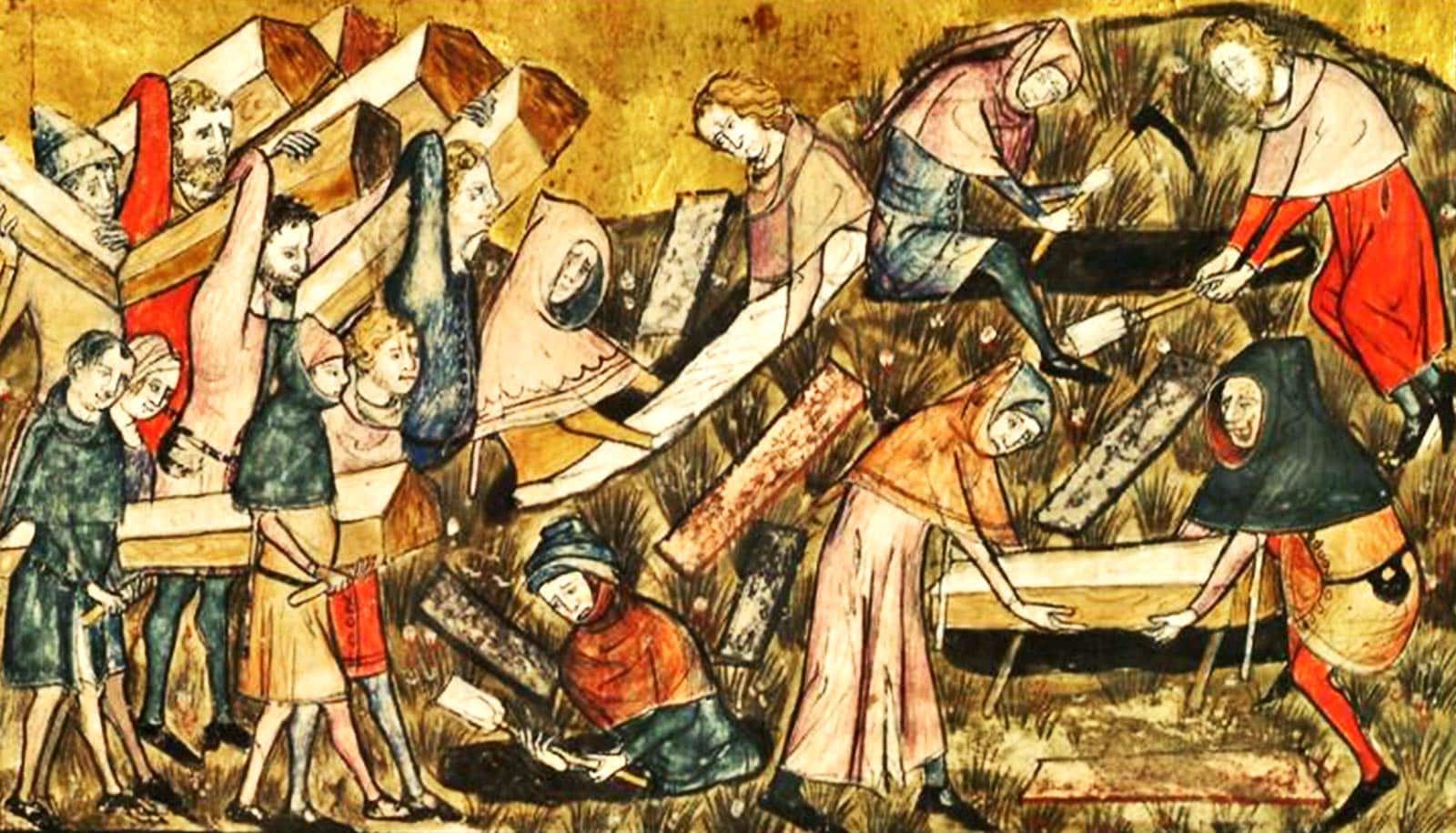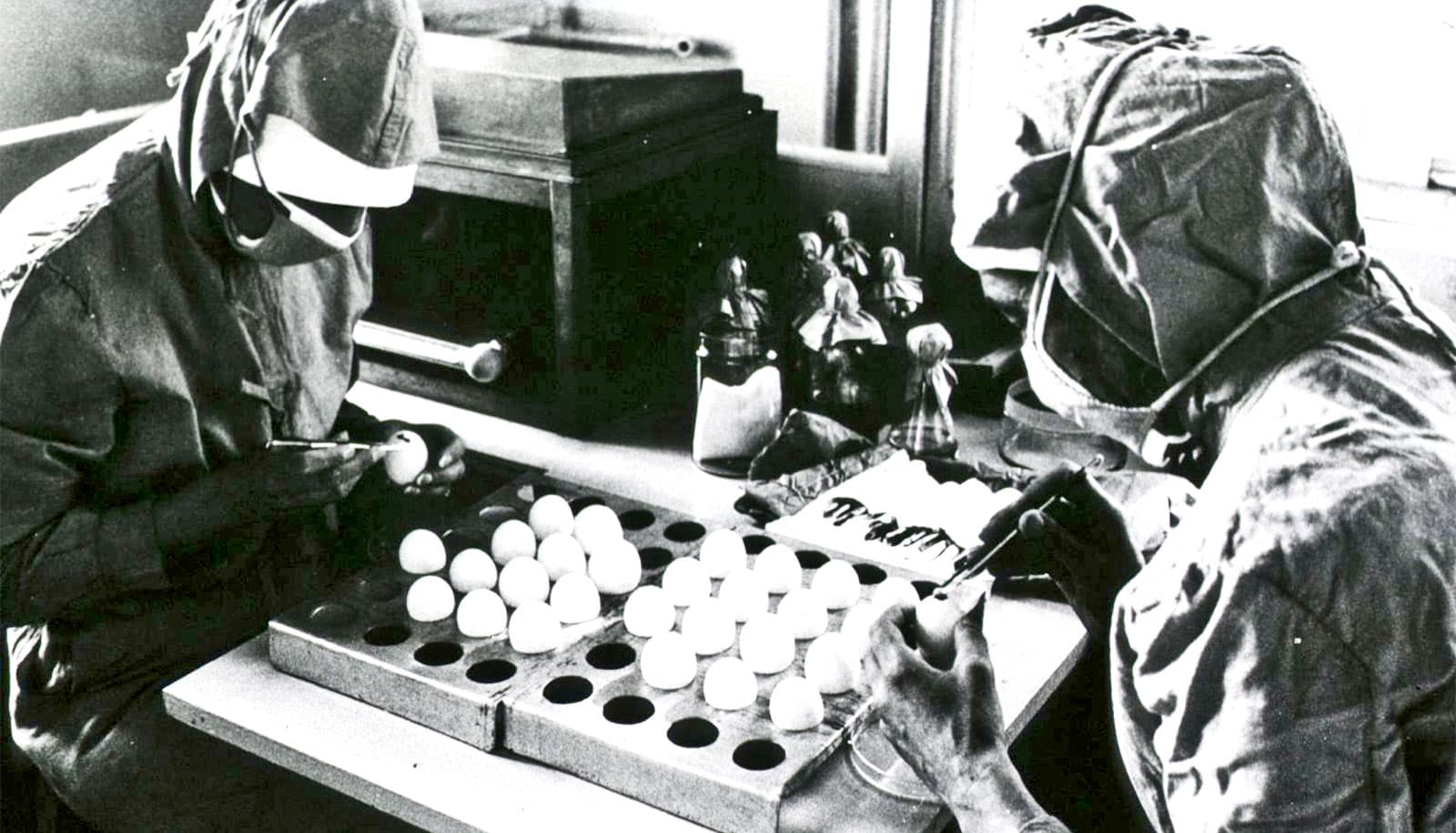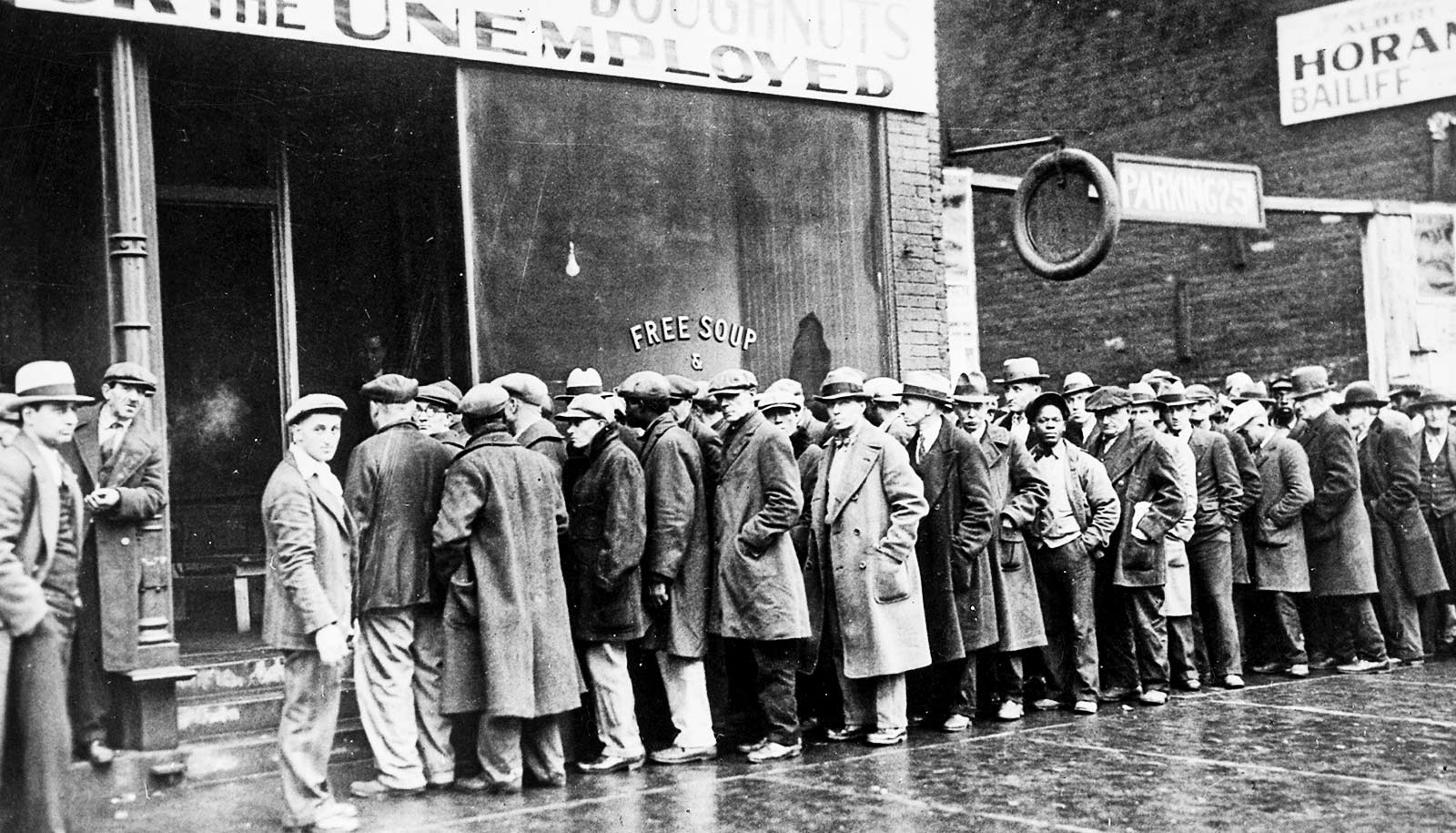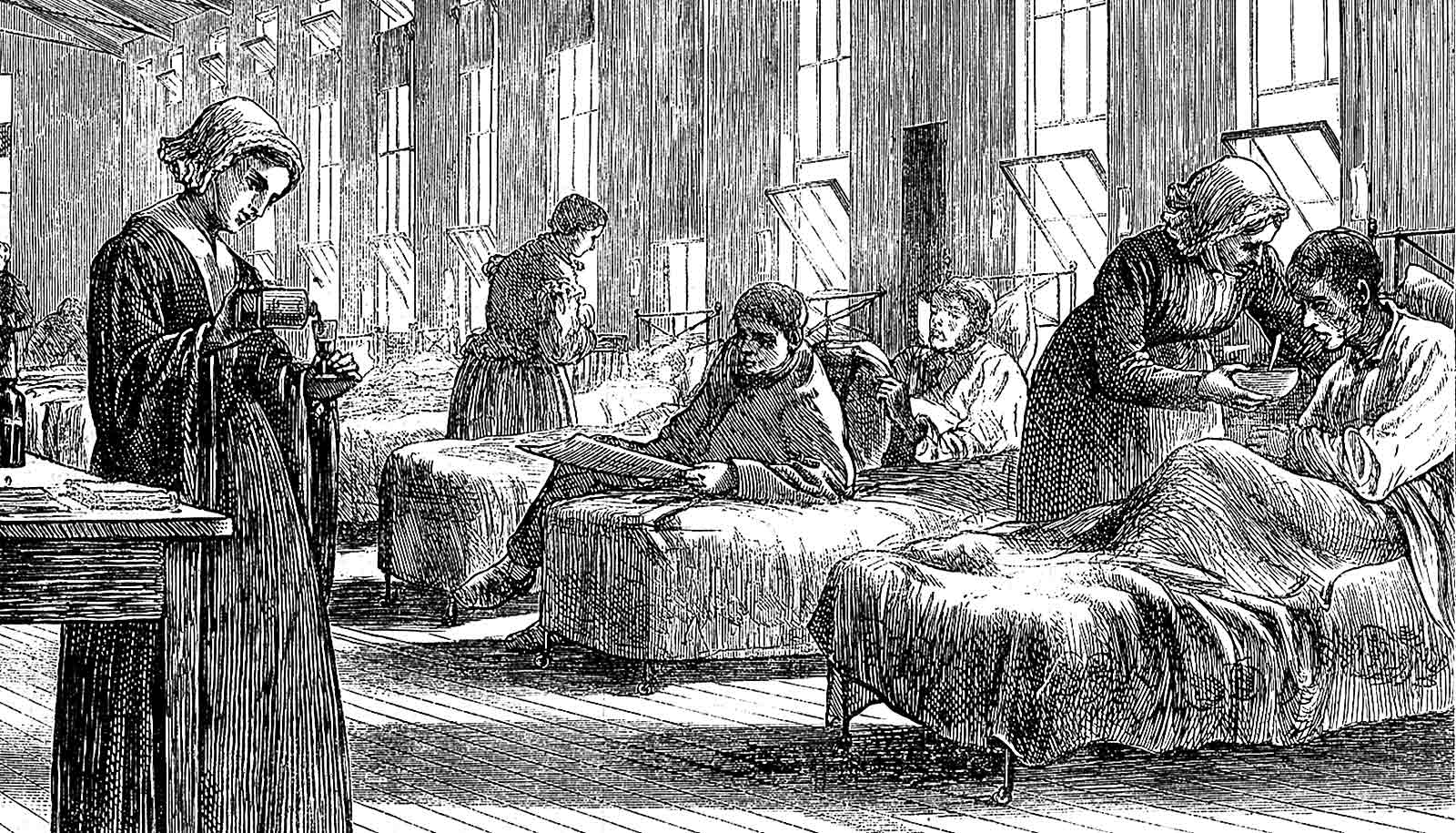There are parallels between today’s COVID-19 pandemic and the Black Death of 14th-century Italy, as well as lessons we can learn from that time, historian Paula Findlen argues.
For Italians in the 14th-century, the bubonic plague at first seemed extraordinary but its repeated return made it so much a part of daily life that it became an economic annoyance and an administrative problem to resolve. The plague eventually led to advances in medicine and public health, according to Findlen, a professor of Italian history at Stanford University and director of the Suppes Center for the History and Philosophy of Science and Technology.
“The history of pandemics—and not only plague—puts our fears about COVID-19 in perspective. Earlier societies repeatedly found ways to recover from the impact of disease, with far fewer resources than we have today. I hope this reminds us to be creative and resilient with our own challenges,” says Findlen, whose research examines how the early history of science, medicine, and technology are central to understanding contemporary society.
Findlen recently wrote a review essay about the Florentine humanist Boccaccio’s experience with the Black Death in Renaissance Italy.
As the world confronts another global pandemic, Findlen explains the problems Renaissance Italians faced related to the Black Death, including ones that might seem familiar to us today, such as the difficulties of reliably reporting the disease, misinformation campaigns, and political tensions between states around their response.
She also digs into the origins of the word “quarantine” and Giovanni Filippo Ingrassia, whom Findlen likens to a Renaissance version of Anthony Fauci, director of the US National Institute of Allergy and Infectious Diseases:
Are there any parallels between how we’re managing COVID-19 today and how Italians thwarted the bubonic plague in the 14th-century?
Since antiquity, people have debated whether to remain or flee during an epidemic, and how to prevent others from coming. “Quarantine” is a specific legacy of how late medieval and Renaissance cities responded to plague, not during the initial pandemic of 1346-53, but after its return. The first known legislation (by the Venetians) in 1377 only specified 30 days but it evolved into 40, which is what quarantina means. Forty made more sense to physicians who read Hippocrates on the typical length of a highly contagious disease and also knew, as Christians, that this was the duration of Lenten fasting.
How did the bubonic plague change the relationship between science, government, and society?
The idea of public health—health as a common and collective good—predates the Black Death and was never only about disease. It also encompassed the infrastructure that contributed to society’s well-being in general, in Italy and elsewhere. The repeated return of plague became a reason to invest more specifically in hospitals and to repurpose leprosaria [leper asylums], whose population had declined, by turning them into “pest houses” on the edge of cities such as Venice. Eventually, it led to a bureaucracy charged with maintaining a healthy society.
The medicalized vision of public health became much more common during 17th-century outbreaks of plague and other diseases than in the 14th century. Early modern states took a greater interest in policing health, especially among the poor, displaced, and foreign inhabitants who could not claim citizenship. They were at times perceived to foment “bad air” (the word “malaria” literally means that), though there was some understanding that animals and textiles might also be sources of infection. They just didn’t know why because they had no understanding of viruses, let alone the idea of bacterial infection.
In what ways did the Black Death change medicine and scientific research?
The inability of 14th-century medicine to prevent plague from devastating societies throughout Eurasia posed a challenge to the explanatory power of their science. How did people get this disease? Why did some survive and so many die? Why did their therapies fail?
Fundamentally, it led physicians to pay closer attention to what they could learn directly from bodies and the environmental factors contributing to disease in addition to what they also learned from books. But first, they had to survive this disease—medical practitioners were an especially vulnerable population.
You have studied the history of scientific networks and the spread of news and information. As scientists from around the world race to find treatment and a vaccine for COVID-19, are there lessons from the past that are applicable today?
A productive scientific network creates collaborations that are not simply local but benefits from the aggregation of resources, knowledge, and perspectives from multiple locations. Italian public health boards of the 17th century were a kind of information network mobilized to define the emergence and course of an epidemic; they needed to establish preventive measures as well as find potential solutions. Declaring the end of a plague was a matter of good information.
Often, we see how hard it was to create reliable channels of reporting about disease, deaths, and their causes, and this is still true today. Misinformation is hardly a 21st-century invention.
Cities were reluctant to acknowledge the presence of plague because of the economic consequences, so you find underreporting as well as misdiagnosis to prevent a full quarantine from taking effect. Similarly, political tensions between states could turn vague rumors of plague into the basis for retaliatory action. Quarantine could be a political weapon as well as a subject of diplomatic negotiation and agreement.
Was there a figure like Anthony Fauci (director of the US National Institute of Allergy and Infectious Diseases) in Renaissance Italy?
As for Anthony Fauci, my choice is the 16th-century Sicilian physician Giovanni Filippo Ingrassia who was protomedico [state-appointed physician in charge of public health] during the 1575 plague, which meant that he was responsible for the entire island’s health.

Ingrassia had already combatted a serious outbreak of influenza in the 1550s, and made the important clinical observation that scarlet fever is different from measles during another epidemic. In 1575, he advocated important preventive measures including the creation of separate wards for sick, potentially infected and convalescent patients. Like Dr. Fauci, his understanding of public health came from the long, hard experience of multiple epidemics and a strong sense of social responsibility and civic duty.
What enduring legacy did the bubonic plague leave on life in Italy and beyond?
For Italians in the 14th-century, plague at first seemed extraordinary, then it became ordinary, even endemic. People responded creatively to the initial waves of plague. They thought about life and death, love and friendship, sickness and health differently. They took the moral pulse of their society, while getting down and dirty in the political struggles of the age. Once people got used to the idea that plague would periodically return, it became an economic annoyance, a catalyst for social negotiation, and an administrative problem to resolve.
The arc and duration of each outbreak became a measure of the success and failure of public health, rather than a subject of great reflection. Hospitals and charitable institutions benefited from the ongoing need to experiment with how to care and cure, and how to tend compassionately to the poor in the midst of the horrors and fears of a major pandemic.
What are the lessons from Renaissance Italy that can inform our response to COVID-19?
I find many interesting lessons, without making them parallel stories. The mortality rate from plague was so much greater—typically 30% to 60% of the population. We are simply not used to death at this level, and plague was just one of many ways people died suddenly and prematurely. We should all be grateful for clean water, better diet and sanitation, modern appliances that replace hard physical labor, antibiotics, and other daily comforts and medical innovations. We resist disease better than just about anyone in the 14th through 17th centuries. At the same time, we still see today how the absence of some or all of these ingredients can render life shorter, difficult, and more vulnerable to disease. In this respect, the premodern experience of disease has never entirely gone away.
Source: Stanford University



